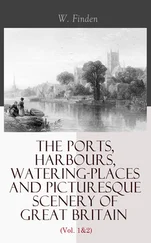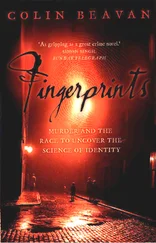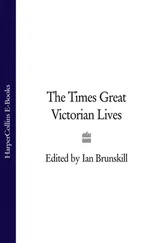The next year Whicher told William Wills a more commonplace story of how clothes could help capture a criminal. A detective sergeant - probably Whicher himself - was called in by a smart London hotel to find a man who the previous night had ransacked a guest's portmanteau. On the carpet of the room in which the trunk had been looted, the detective noticed a button. He watched the hotel guests and staff all day, closely scanning their clothes - at the risk, said Whicher, of being 'set down for an eccentric critic of linen'. Eventually he spotted a man with a button missing from his shirt, the thread dangling; the remaining buttons matched the 'little tell-tale' that the detective had found.
The Road Hill case was dense with fabric. The setting of the murder happened to be clothmaking country, a land of sheep and wool mills. The family's dirty laundry lay at the heart of the investigation, their washerwoman was a key witness, and the investigation threw up three clues of cloth: a flannel, a blanket and a missing nightdress. Whicher closed in on the last of these, much as the narrator of Wilkie Collins' 'The Diary of Anne Rodway', a short story of 1856, closed in on a torn cravat: 'A kind of fever got possession of me - a vehement yearning to go on from this first discovery and find out more, no matter what the risk might be. The cravat now really became . . . the clue that I was resolved to follow.'
The thread that led Theseus out of the maze was true to another principle of Whicher's investigation: the progress of a detective was backwards. To find his way out of danger and confusion, Theseus had to retrace his steps, return to the origin. The solution to a crime was the beginning as well as the end of the story.
Through his interviews with the Kents and those who knew them, Whicher tracked the family back in time. Though there were gaps, contradictions, indications of further secrets, he pieced together a narrative that he believed provided an explanation for murder. Much of it was chronicled in the book about the case that Joseph Stapleton published in 1861; the surgeon's account was heavily biased towards Samuel Kent, but it was scrupulous - and scurrilous - enough to hint at the many fissures in the family story.
In east London in 1829 Samuel Kent, the twenty-eight-year-old son of a carpetmaker from the north-eastern suburb of Clapton, married Mary Ann Windus, the twenty-one-year-old daughter of a prosperous coachmaker from the neighbouring district of Stamford Hill. In a miniature painted the year before the marriage, Mary Ann was shown with curly brown hair, dark eyes, bright, pursed lips in a pale face, and a wary, guarded cast to her features. Her father was a Fellow of the Royal Society of Antiquaries and an expert on the Portland Vase; the family home was crammed with paintings and curios.
The newlywed couple moved into a house near Finsbury Square, in the centre of London. Though their first child, Thomas, died of convulsions in 1831, they had a second - Mary Ann - before the year was out, and a third - Elizabeth - the year after that. Samuel worked as a partner in a firm of dry-salters, dealers in preserved meats and pickles, but in 1833 he resigned on account of an unspecified illness. 'The health of Mr Kent became so precarious,' said Stapleton, 'that he was compelled to relinquish his share of the business.' He took his family to Sidmouth on the Devonshire coast. There he secured a position as sub-inspector of factories for the west of England, the hub of the wool trade.
Mrs Kent first showed signs of madness in 1836, according to Samuel, a year after the birth of another son, Edward. She suffered from 'weakness and bewilderment of intellect' and 'various though harmless delusions'. Samuel later gave three examples of his wife's mental disturbance: she once got lost while out walking with her children near their home; on a Sunday, while he was at church, she tore the pictures out of one of his books and burnt them; and a knife was found hidden under her bed. Samuel consulted physicians about Mrs Kent's condition, and a Dr Blackall of Exeter confirmed that she was weak-minded. Her physical health was also poor.
Samuel continued nevertheless to impregnate her, and the couple saw four babies die in succession: Henry Saville in 1838, at fifteen months; Ellen in 1839, at three months; John Saville in 1841, at five months; and Julia in 1842, also at five months. ('Saville' - spelt sometimes with one '1', sometimes without an 'e' - was the maiden name of Samuel's mother, who came from a well-to-do Essex family.) The cause of several of their deaths was given as 'atrophy', or wasting away. All were buried in the Sidmouth graveyard.
Constance Emily was born on 6 February 1844. Samuel gave the care of his new child to Mary Drewe Pratt, a twenty-three-year-old farmer's daughter who had joined the house-hold the previous year as governess to the older girls. She was a short, attractive, self-assured young woman who had previously been employed as a live-out governess by the families of a solicitor and of a clergyman; she came recommended by a Sidmouth doctor. Miss Pratt was granted complete control of Constance, and she devoted herself to her charge. She fattened the frail baby into a sleek, powerful little girl. Constance was the first of the Kents' children to survive in nearly a decade.
The next year, on 10 July 1845, Mary Ann Kent gave birth to her last child, William Saville. During her confinements with Constance and William, Samuel said, her madness intensified. The management of the house-hold was placed entirely in the hands of Miss Pratt.
In 1848 Samuel's boss, one of the four chief factory inspectors, urged him to move house in order to escape gossip about the family: the government inspector with the deranged wife and the favoured governess (the triangle echoed that in Charlotte Brontee's Jane Eyre , published the previous year). The Kents left their trellised, thatched cottage on the cliff and took up residence at Walton Manor in Walton-in-Gordano, a small Somersetshire village. In 1852 they again moved to avoid the scrutiny of their neighbours, this time to Baynton House in East Coulston, Wiltshire. At Baynton House on 5 May, while Miss Pratt was visiting her parents in Devonshire, Mary Ann Kent died aged forty-four of 'an obstruction of the bowel'.* She was buried in the neighbouring churchyard.
In August 1853, Samuel Kent married the governess. They travelled to Lewisham, just south of London, for the ceremony. Samuel's three daughters - Mary Ann, Elizabeth and Constance - were bridesmaids. Edward Kent, now a headstrong eighteen-year-old, had joined the merchant navy and was away at sea when his father and Miss Pratt were married. He was horrified upon his return to learn of the marriage, and argued bitterly with his father. A few months later - in 1854, the year Constance turned ten and William nine - the transport ship in which Edward was sailing went down on its way to Balaklava, and all its crew were thought to have drowned. As the Kents were setting out for Bath to buy mourning clothes, the postman arrived with a letter from Edward: he had survived the wreck. 'The father staggered back, almost fainting, into his house,' wrote Stapleton. 'We shall close the door upon the scene which ensued; upon that revulsion of feeling, under the shock of which his heart must have almost stood still with joy.'
That June, in another violent capsizing of emotions, Samuel's new wife was prematurely delivered of her first, and stillborn, child.
The second Mrs Kent was said to be an impatient woman who ran a strict house-hold. Constance became troublesome at home, sometimes insolent. For punishment her former governess boxed her ears or, more usually, banished her from the parlour to the hall.
In 1855 Samuel's boss urged him to find another home, now that his first wife's death had removed the need to hide from the world. Baynton House was too secluded, said the chief inspector; Kent should be nearer to the mills that he supervised and to the railways by which he travelled round his region, an area that stretched hundreds of miles from Reading to Land's End. For the sake of his family - especially Mary Ann and Elizabeth, in their twenties and nowhere near married - he should be living closer to other people of his rank.
Читать дальше












